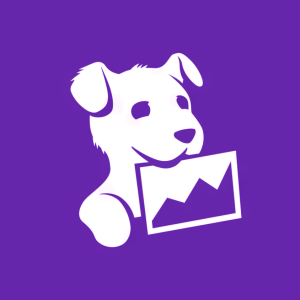Datadog Releases Capabilities to Correlate User Sessions with Backend Application Traces
Datadog (NASDAQ: DDOG) has introduced new capabilities that connect user experience data with application traces, enhancing frontend and backend performance monitoring. This innovation enables on-call engineering teams to quickly identify issues affecting customer experience in mobile and web applications. By automating two-way correlation between Real User Monitoring (RUM) and Application Performance Monitoring (APM), Datadog aims to reduce Mean Time to Detect (MTTD) and Mean Time to Resolve (MTTR) incidents, streamlining troubleshooting efforts and improving overall performance.
- New capabilities in RUM and APM improve correlation between user experience and backend performance.
- Automation reduces MTTD and MTTR, enhancing operational efficiency.
- Empowers teams with a unified view of the application stack.
- None.
Insights
Analyzing...
Datadog, Inc. (NASDAQ: DDOG), the monitoring and security platform for cloud applications, today announced new capabilities connecting user experience data with application traces, bridging the gap between frontend and backend performance monitoring. This new capability enables on-call engineering teams to pinpoint the root cause of issues impacting customer experience on mobile and web-based applications to backend services.
Traditional Real User Monitoring (RUM) and Application Performance Monitoring (APM) solutions are siloed, requiring separate workflows to troubleshoot across the stack. This makes connecting user experience data from browsers and mobile applications with backend traces, metrics, and logs a complex and tedious task. These manual correlation efforts slow down on-call engineering teams when trying to remediate issues, as they struggle to pinpoint which part of the application stack is responsible for revenue impacting incidents. Datadog’s automatic two-way correlation for frontend user sessions in RUM and backend traces in APM eliminates these blind spots, allowing on-call teams to quickly identify root causes and thus maintain robust user-experience on browser and mobile applications.
“Typically, frontend and backend engineers use their own, siloed monitoring solutions and rarely even look at the same signals and metrics. Very often, issues can arise anywhere in the stack and propagate in every direction,” said Renaud Boutet, Vice President of Product, Datadog. “By automatically connecting user journeys that start on the frontend with requests made to backend services, Datadog enables organizations to significantly reduce MTTD and MTTR for incidents.”
"Our DevOps and SRE teams use the Datadog RUM to APM connection to visualize the full user journey and pinpoint the exact source of an errant or slow customer request within their stack," said Ronni Persson, Engineering Manager, Web Platform Team, SeatGeek. "The automatic correlation of the frontend and backend enables our teams to communicate using the same language when resolving errors across the stack."
Datadog’s new APM and RUM capabilities automatically correlate critical application performance data, providing teams with:
- Full-Stack Correlation: connecting every user request to all backend services to cut down MTTD and MTTR with a unified view across the application stack
- Frontend/Backend Comparison: comparing frontend and backend durations on every request, enabling engineering teams to identify and optimize slow user experiences
- Trace Search and Analytics by User Journey Tags: slicing and dicing backend traces by location, device, operating system, and more to provide context for impacted customers
For more information on end-to-end monitoring, please visit: www.datadoghq.com/blog/unify-apm-rum-datadog
About Datadog
Datadog is the monitoring and security platform for cloud applications. Our SaaS platform integrates and automates infrastructure monitoring, application performance monitoring and log management to provide unified, real-time observability of our customers’ entire technology stack. Datadog is used by organizations of all sizes and across a wide range of industries to enable digital transformation and cloud migration, drive collaboration among development, operations, security and business teams, accelerate time to market for applications, reduce time to problem resolution, secure applications and infrastructure, understand user behavior and track key business metrics.
Forward-Looking Statements
This press release may include certain "forward-looking statements" within the meaning of Section 27A of the Securities Act of 1933, as amended, or the Securities Act, and Section 21E of the Securities Exchange Act of 1934, as amended. These forward-looking statements reflect our current views about our plans, intentions, expectations, strategies and prospects, which are based on the information currently available to us and on assumptions we have made. Actual results may differ materially from those described in the forward-looking statements and are subject to a variety of assumptions, uncertainties, risks and factors that are beyond our control, including those risks detailed under the caption "Risk Factors" and elsewhere in our Securities and Exchange Commission filings and reports, including the Quarterly Report on Form 10-Q filed with the Securities and Exchange Commission on November 12, 2020, as well as future filings and reports by us. Except as required by law, we undertake no duty or obligation to update any forward-looking statements contained in this release as a result of new information, future events, changes in expectations or otherwise.
View source version on businesswire.com: https://www.businesswire.com/news/home/20201217005815/en/







